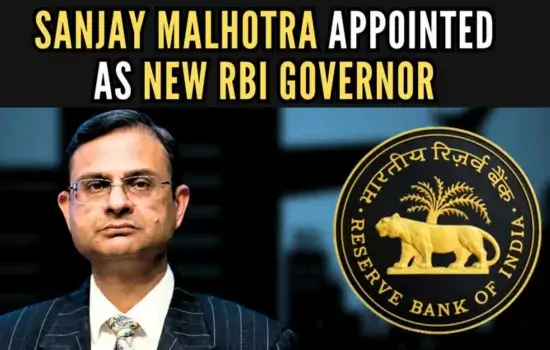Sanjay Malhotra, a seasoned bureaucrat with over three decades in the Indian Administrative Service (IAS), has been appointed as the 26th Governor of the Reserve Bank of India (RBI), succeeding Shaktikanta Das. His appointment comes at a critical juncture, with the Indian economy grappling with slowing growth and rising inflation.
Professional Background and Expertise
Malhotra, a 1990-batch IAS officer from the Rajasthan cadre, holds a Bachelor of Technology in Computer Science and Engineering from the Indian Institute of Technology (IIT) Kanpur and a Master of Public Administration from Princeton University. His extensive career includes pivotal roles such as Secretary in the Ministry of Power and Chairman and Managing Director of REC Limited. Most recently, he served as the Revenue Secretary, where he was instrumental in tax administration and policy formulation.
Advocacy for Balanced Economic Policies
In his tenure as Revenue Secretary, Malhotra emphasized the importance of balancing revenue collection with economic growth. Addressing officers of the Directorate of Revenue Intelligence (DRI) during its 67th Foundation Day, he cautioned against aggressive tax enforcement that could stifle economic activity. He remarked, “Revenue comes in only when there is some income, so we have to be very cautious so that we do not in the process, as they say, kill the golden goose.”

Economic Context and Immediate Challenges
Malhotra assumes leadership of the RBI during a period marked by economic deceleration and inflationary pressures. The Indian economy expanded at a seven-quarter low of 5.4% between July and September, intensifying calls for monetary easing to stimulate growth. Concurrently, inflation has breached the RBI’s upper tolerance limit, complicating policy decisions.
Market Reactions and Policy Expectations
The announcement of Malhotra’s appointment has influenced financial markets, with the Indian rupee reaching a record low of 84.85 against the U.S. dollar. This depreciation reflects market anticipation of a potential shift towards a more accommodative monetary policy under his leadership. Government bond yields have also declined, indicating expectations of possible interest rate cuts to bolster economic growth.
Commitment to Policy Continuity
Despite speculations of a dovish policy shift, Malhotra has pledged to maintain stability and continuity in the RBI’s policy framework. He underscores the importance of consistent policies for fostering business confidence and economic resilience, stating that stability is crucial for the nation’s economic well-being.
Balancing Growth and Inflation
Navigating the dual mandate of controlling inflation while supporting growth will be a central challenge for Malhotra. His prior experience in revenue and economic affairs is expected to inform a balanced approach, aiming to harmonize fiscal and monetary policies to address current economic challenges.
Conclusion
Sanjay Malhotra’s appointment as RBI Governor brings a wealth of administrative experience and a reputation for meticulous policy execution. As he steps into this pivotal role, the focus will be on his strategies to steer the Indian economy towards sustainable growth while maintaining price stability, ensuring that the “golden goose” of economic prosperity continues to thrive.